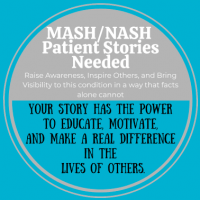By Rachel Whetstone from In The Cloud Copy
James DeLine works as the village doctor in La Farge, Wisconsin, a rural community with a population of just 750. The village is home to a large community of Amish people, who are at increased risk for some of America’s most rare diseases. Over the decades of serving this community, DeLine has earned the trust of the Amish, and learned much about illnesses that most doctors never see.
An Isolated Population
About 20% of DeLine’s patients are Amish, also known as Old Order Mennonite or Plain People. Amish people live a simple lifestyle with limited interaction with technology and the modern world. They tend to avoid interaction with those outside of the community.
Because traditional Amish principles discouraged marriage to outsiders, Amish communities are at increased risk of genetic diseases. Couples are more likely to be closely related, and genetic mutations are more likely to be present in both parents, increasing the likelihood that the mutations will be passed down through several generations. This means that communities like La Farge have some of the rarest diseases on earth.
Decades of Trust
James DeLine first became La Farge’s village doctor in 1983. He had no experience treating the Amish but approached the community respectfully with an openness to learn. Many of the Amish are wary of modern medicine and technology. They often fear that their beliefs will not be respected, or that a doctor or hospital visit will bring more suffering and financial expense than they are able to handle. DeLine has eased many of their fears by spending years understanding the community and making house calls to those who are unable or unwilling to travel.
Tradition Meets Modern Technology
Many Amish people prefer to use traditional herbal treatments and natural methods to treat illness before visiting a doctor or hospital. Abie and Edna Yoder were using natural remedies for their 8-year-old daughter, Barbara, who was having stomach pain and bloody diarrhea. Barbara weighed only 38 pounds, 19 pounds below the average weight for her age. She wasn’t getting better.
The Yoders were hesitant to visit a modern doctor, but a midwife suggested that they speak with DeLine. Dr. DeLine made it clear to the family that he would respect their wishes and traditions.
Barbara was admitted to American Family Children’s Hospital in Madison, Wisconsin. DeLine noticed that the girl had strange looking bumps on her arms and on her legs, which turned out to be deposits of cholesterol. Genetic showed that the girl had an extremely rare illness called sitosterolemia, which was later found in other families in the community. With treatment, Barbara’s sitosterol levels were lowered and she was able to gain weight. Further research showed that this community in Wisconsin has the second largest cluster of the disease in the world.
Rare Diseases Concentrated in Amish Communities
Approximately 200 diseases are found in much higher concentrations among the Amish. Researchers have developed a blood screening test specifically for Amish people that can identify more than 120 of them.
DeLine has worked with at least 30 of the rare diseases in his patients and has seen at least two patients with diseases that have never before been described in medicine.
A rare disease called BRAT1 has been documented in only 20 to 30 cases around the world. DeLine has personally seen six of those cases in his community. Babies with the diseases are born rigid and often have frequent seizures.
There is no cure for BRAT1, and babies with the disease die within months of their birth. However, the ability to identify the disease brings the family closure and allows them to spend the baby’s short life span at home instead of in a hospital setting.
Intersecting Worlds
The intersection of the traditional world of the Amish and the modern world of genetic research can bring a lot of insight to medicine today. In some cases, the study of these rare diseases has brought new treatments and cures. In other cases, no cure has been found, but the compassion and support for afflicted families has made a world of difference in their quality of life.
With one foot in the simplicity of the past, and the other in the complexities of modern genetic treatment, DeLine is in a unique position to bring new knowledge to the medical world.
Check out the story here.





